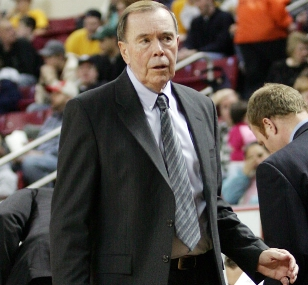by Brian McCormick
Josh Waitzkin wrote a great book titled The Art of Learning in which he chronicles his experience as a chess prodigy and push-Judo World Champion. He attributes his success to his ability to learn.
In the lead-up to UFC 124, Kevin Iole wrote about the transformation of Josh Koscheck and Georges St. Pierre since their first fight. About GSP, he writes:
“He literally traveled the world seeking knowledge. While he’s one of the greatest athletes in the sport, his Brazilian Jiu-Jitsu coach, John Danaher, said it’s St. Pierre’s ability to absorb coaching that makes him so unique.
‘He’s mastered the art of learning,’ said Danaher... ‘His ability to learn is what has helped him to continue to make progress over time. Most professional mixed martial artists have a certain skill set that is associated with them, and they use that and sustain themselves throughout their careers with that. But he’s one of the few who continues to change, modify and adapt and bring in new techniques over time.’
He’s meticulous when it comes to doing things correctly. And so, even though he had routed the hard-punching Dan Hardy at UFC 111, the first thing he did when he returned to the locker room was get onto the floor and question Danaher about mistakes he made when going for an arm bar submission in the first round.”
I wrote an article recently about automaticity (http://learntocoachbasketball.com/automaticity-skill-development-and-expert-performance) and cited a study titled “Inside the brain of an elite athlete: the neural processes that support high achievement in sports.” Yarrow, Brown and Krakauer (2009) wrote:
It is not automaticity per se that is indicative of high proficiency but rather the level of skill at which automaticity is attained.
Learning is a relatively permanent change in performance that occurs through practice. To continue improving, one must acquire a new skill, as is often indicative of mixed martial artists who start in one discipline (wrestling) and learn new disciplines (boxing) as a way to improve. Another way to improve is to push past one’s current level in terms of the speed-accuracy trade-off. For GSP, that might mean improving the speed of his punches or the speed with which he reads his opponent to decide when, where and how to punch without sacrificing accuracy; or, he could become a more accurate puncher without sacrificing speed, maybe by throwing more straight punches as opposed to looping punches.
In basketball, young players often improve by acquiring new skills. As players gain experience, many automate these skills at an early age and their improvement plateaus. I have noticed that many female players essentially peak around their junior year of high school. Rather than settle into a performance level when one reaches automaticity, to improve, one must continue learning. If the player has learned all the basic skills, improvement requires pushing past her current threshold in terms of speed or accuracy. This is why many coaches push players to practice at the edge of their performance level. This is also why improvement often starts with a dip in performance.
To continue learning, the player must learn to make her moves quicker with the same level of accuracy. Imagine a player learning to dribble. Initially, the player improves by eliminating gross mistakes - essentially, the players learns to control the ball with her fingers. As her control improves, she furthers her learning by adding new moves: in-n-out, crossover, behind-the-back, etc. When she learns a new move, her performance declines because learning is an error-filled process. When she learns a crossover for the first time, she makes more mistakes than she had been making when dribbling the ball in straight lines. As she reduces errors and automates her crossover dribble, she automates the skill at a certain speed of execution. At that speed, she rarely makes a mistake - she has has supreme ball control at that speed or great accuracy with her dribbling.
To continue learning, she has to make the move faster. Learning the crossover dribble at a faster speed requires concentration, a specific goal and numerous repetitions - deliberate practice. The player must move outside of her comfort zone (the speed at which she controls the ball with great accuracy) and practice at a faster speed. At this faster speed - the edge of her performance level - she is likely to make more mistakes. However, as her learning continues, she makes fewer and fewer errors at this speed, which signifies her learning which we see as improvement. At that point, she must push to a new performance edge and make more mistakes in an effort to learn and improve.
This is an exhaustive task, especially as players gain experience and reach higher and higher levels of performance. It is easy to improve when learning a new skill. It is very hard to continue one’s learning on an automated skill.
The elite performers manage to push through their comfort zone and practice on the edges to continue learning and improving. GSP’s post-fight behavior is indicative of the dedication and concentration needed for learning to continue. In essence, his mistake in the fight set the conditions for deliberate practice, as he sought an expert for immediate feedback, and one imagines that he trained to improve that specific skill with numerous repetitions over the next few weeks. In that way, he learned something new, either because it was a new skill or because he was able to perform an old skill faster, more accurately or in different situations.
Many players lack this ability or desire to further their learning once they reach an acceptable level of performance. Their skill automaticity does not signify their expertise, but places a ceiling on their performance. Those who continue their learning and push past their comfort zone tend to be the ones who excel at higher and higher levels of competition.

